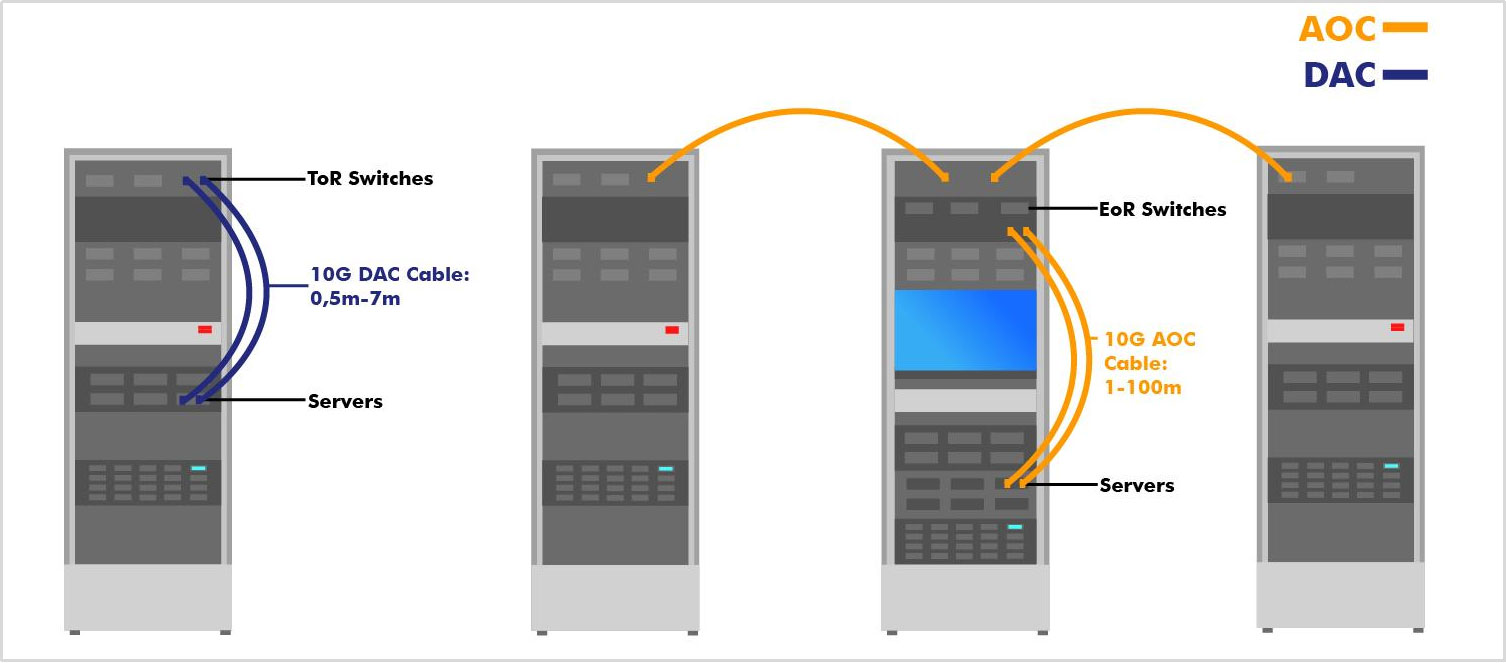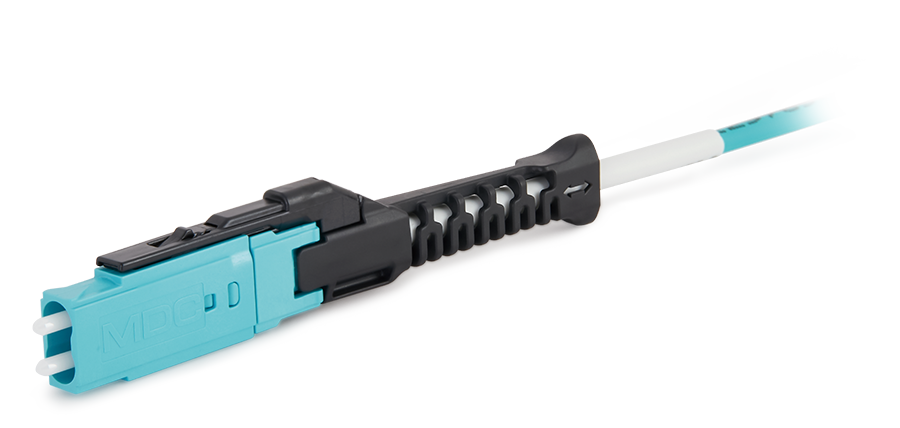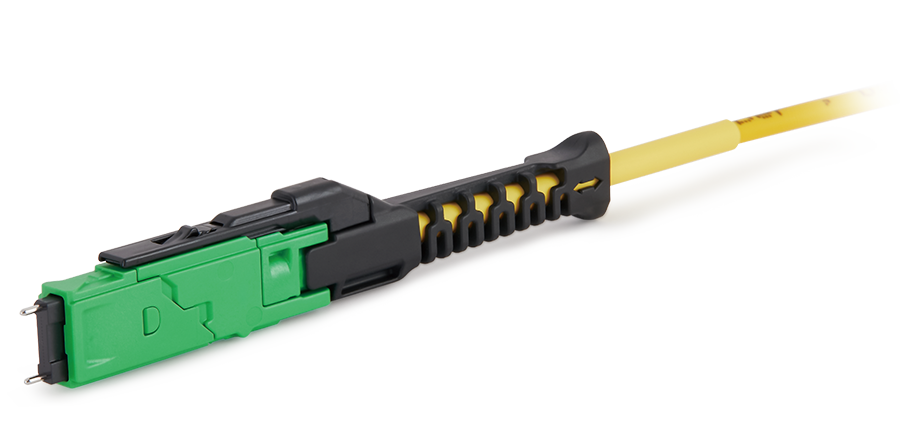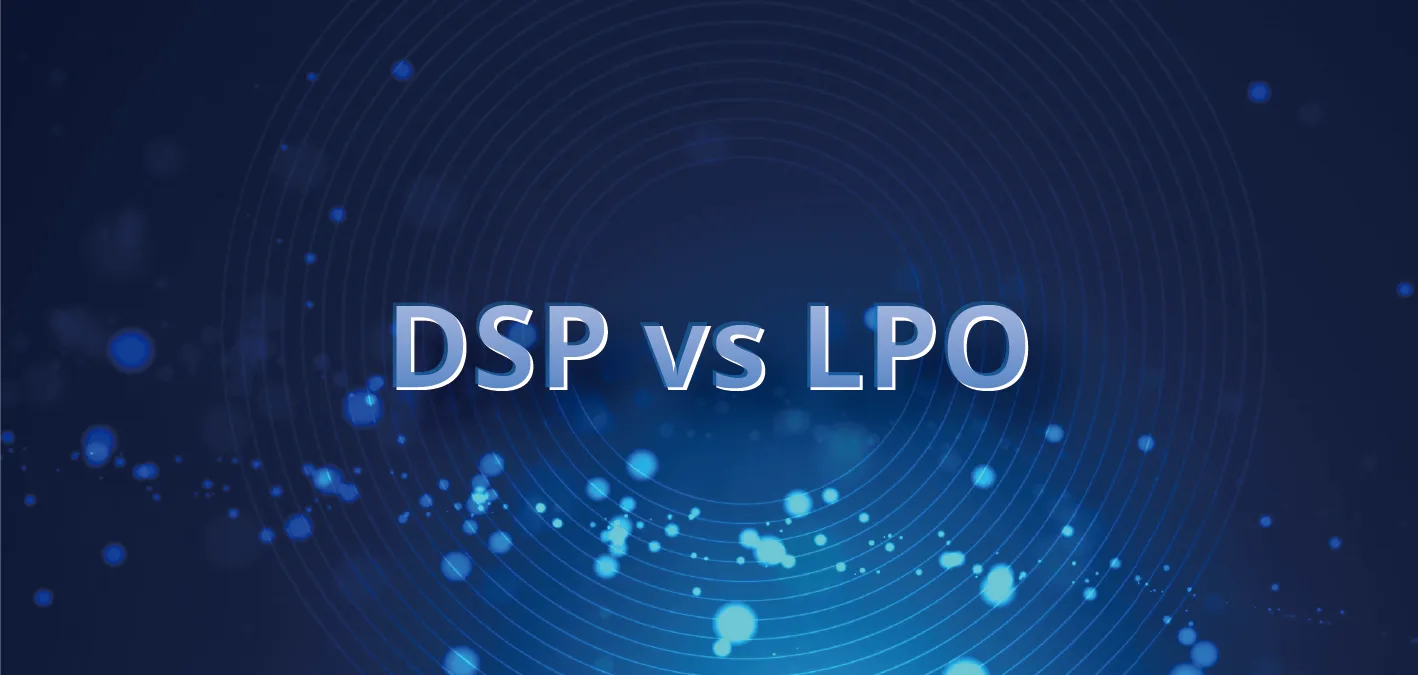The expansion of online applications, cloud services, and virtualization solutions has intensified the need for high-speed switching in data centers. In response, data center operators are increasingly adopting top-of-rack (ToR) switches within the spine-leaf architecture, a network design that not only supports current data center applications but also anticipates future growth.
Top-of-Rack (ToR) Architecture and Cabling Demands
The ToR architecture stands as the prevailing choice for cabling between racks in extensive networks, such as data centers. Meeting the demands of contemporary networks requires high-performance cabling and cost-effective connections.
Choosing the Right Cabling: DAC and AOC
Two primary cabling solutions for data center and enterprise network connections are Direct Attach Copper (DAC) and Active Optical Cables (AOC). Both DACs and AOCs serve as plug-and-play solutions, enabling users to optimize existing networks without the need for new fiber cabling.

Direct Attach Copper (DAC)
DAC, or Direct Attach Copper, is a high-speed twinax cable featuring a (Q)SFP module on both ends, connecting via a fiber port. DACs can be passive or active, with passive DACs having no electrical components and a range of up to 7 meters. Active DACs, incorporating a powerful chip for signal processing, extend the range to around 10 meters. Primarily, DACs connect servers to switches within or adjacent to the rack, serving as an alternative for ToR connections or for stacking switches.
Active Optical Cable (AOC)
AOC serves as the optical counterpart to copper-based direct connection cables. Utilizing high-speed transmission technology, AOCs consist of multimode optical fibers and are available only as active optical cables, achieving ranges of up to 100 meters. AOCs find applications in multiple locations within the data center, facilitating numerous cable connections across server racks and various main network areas.
Best Practices
In practical scenarios, DAC direct attach cable and individual transceiver modules with fiber optic cables have demonstrated superior performance over AOC cables. DAC cables excel in short cabling distances within a server rack, offering advantages in energy consumption and ease of handling. While AOC cables are cost-effective, individual transceiver modules are preferable for longer distances, providing greater flexibility and ease of replacement during network expansion or modernization.
Summary: DAC vs. AOC in Real-World Testing
For access-layer connectivity or scaling data center networks with a spine-leaf architecture, both DAC and AOC are available in the QSFP form factor. However, real-world testing reveals that AOC cables face challenges in comparison to traditional transceiver modules and fiber-optic cables. DAC, on the other hand, outperforms both alternatives.
In conclusion, the choice between DAC and AOC hinges on specific requirements, distances, and the adaptability needed for future network expansions.

 Fiber Optic Flex Circuit (FOFC)
Advanced Simulation & Optimization, High Positioning Accuracy, Flexible Customization, Rigorous Reliability Testing
Fiber Optic Flex Circuit (FOFC)
Advanced Simulation & Optimization, High Positioning Accuracy, Flexible Customization, Rigorous Reliability Testing MDC Solution
US Conec's MDC connector is a Very Small Form Factor (VSFF) duplex optical connector, expertly designed for terminating single-mode and multimode fiber cables with diameters up to 2.0mm.
MDC Solution
US Conec's MDC connector is a Very Small Form Factor (VSFF) duplex optical connector, expertly designed for terminating single-mode and multimode fiber cables with diameters up to 2.0mm. MMC Solution
US Conec's Very Small Form Factor (VSFF) multi-fiber optical connector that redefines high-density connectivity with its cutting-edge TMT ferrule technology and intuitive Direct-Conec™ push-pull boot design.
MMC Solution
US Conec's Very Small Form Factor (VSFF) multi-fiber optical connector that redefines high-density connectivity with its cutting-edge TMT ferrule technology and intuitive Direct-Conec™ push-pull boot design. EN
EN
 jp
jp  fr
fr  es
es  it
it  ru
ru  pt
pt  ar
ar  el
el  nl
nl 




_and_High-Reflection_(HR)_Optical_Coatings.webp)
